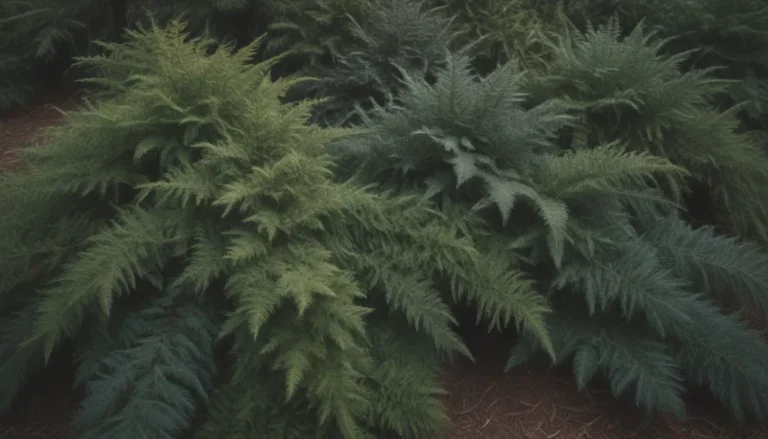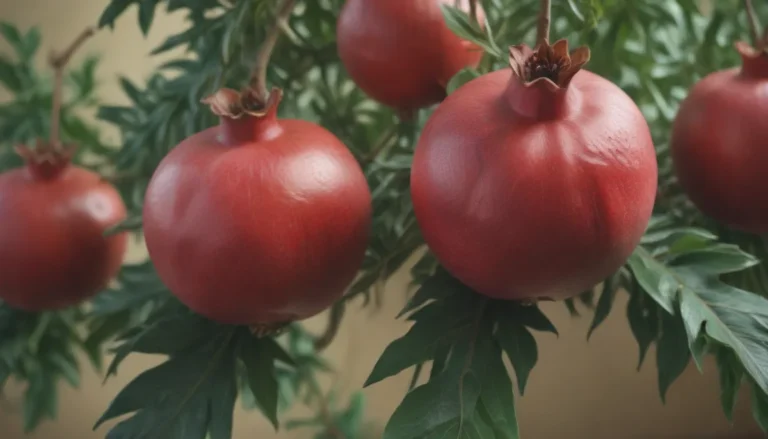Mastering the Art of Growing and Caring for Obedient Plants (False Dragonhead)

Have you ever stumbled upon the charming and lively obedient plant, also known as false dragonhead? This fast-growing perennial may not always live up to its name in the garden, as it tends to spread aggressively by rhizomes. However, with a little guidance and care, you can easily manage and cultivate these beautiful plants in your outdoor space.
In this comprehensive guide, we will explore everything you need to know about growing and caring for obedient plants, from their preferred growing conditions to propagation methods and common issues to watch out for. So, grab your gardening gloves and let’s dive into the world of these vibrant and resilient plants!
Understanding Obedient Plants: A Brief Overview
Before we delve into the care requirements and propagation techniques for obedient plants, let’s take a moment to appreciate the unique characteristics of these stunning perennials. Obedient plants, scientifically known as Physostegia virginiana, are renowned for their attractive flowers that resemble snapdragons.
These captivating flowers slowly bloom from the bottom of the flower stalk upward, creating a visually striking display in any garden. Obedient plants thrive in hot, dry regions with moderate temperatures and prefer full sun exposure and slightly acidic soil to reach their full potential.
Now, let’s explore the essential care tips for growing and nurturing these versatile plants in your outdoor space.
Obedient Plant Care: Essential Guidelines
To ensure the healthy growth and longevity of your obedient plants, it is crucial to provide them with the proper care and attention. Here are the main care requirements you should keep in mind when cultivating these beautiful perennials:
- Light: Obedient plants thrive in full sun but can tolerate partial shade, especially during dry summers.
- Soil: While they prefer moist, slightly acidic soil, obedient plants are quite forgiving and can adapt to average to poor soil conditions.
- Water: Once established, water obedient plants once or twice a week to maintain optimal moisture levels.
- Temperature and Humidity: These resilient plants are hardy in USDA Hardiness Zones 3 to 10 and prefer hot, dry regions with temperatures ranging from 60 to 80 degrees Fahrenheit.
- Fertilizer: Avoid excessive fertilization, as obedient plants generally do not require additional nutrients unless they show signs of deficiencies.
Types of Obedient Plants: A Diverse Selection
When it comes to obedient plants, there is a diverse array of cultivars to choose from, each boasting unique characteristics and visual appeal. Some popular types of obedient plants include:
- Physostegia virginiana ‘Pink Bouquet’
- Physostegia virginiana ‘Summer Glow’
- Physostegia virginiana ‘Summer Snow’ and ‘Crystal Peak’
- Physostegia virginiana ‘Variegata’
- Physostegia virginiana ‘Vivid’
- Physostegia virginiana ‘Miss Manners’
- Physostegia virginiana ‘Rosea’
Each of these varieties offers a distinct color palette and growth habit, allowing you to create a diverse and visually captivating garden landscape.
Propagating Obedient Plants: Methods and Techniques
Propagation is a key aspect of expanding your obedient plant collection and ensuring their continued growth and vitality. You can propagate obedient plants through various methods, including:
- Harvested Seeds: Collect seeds from mature plants and sow them in suitable growing conditions.
- Cuttings: Take cuttings from young, tender shoots to propagate new plants.
- Division: Divide mature plants when they become overcrowded to promote healthy growth and rejuvenation.
By exploring these propagation techniques, you can expand your obedient plant population and enhance the beauty of your garden with ease.
How to Grow Obedient Plants From Seed: Step-by-Step Guide
If you prefer starting obedient plants from seeds, you can follow these steps to ensure successful growth and establishment:
- Indoor Sowing: Start seeds indoors approximately two months before the last frost date or directly sow them in the garden in late fall for early spring growth.
- Outdoor Sowing: Sow seeds directly in the garden before the first snowfall to allow for natural stratification and germination.
By following these guidelines, you can kickstart the growth process of obedient plants from seeds and witness their vibrant blooms in the upcoming seasons.
Potting and Repotting Obedient Plants: Container Gardening Tips
For gardeners looking to contain the spread of obedient plants and maintain their growth within a confined space, potting is an ideal solution. Here are some tips for potting and repotting obedient plants:
- Container Selection: Choose a large pot, preferably 18 inches in diameter, to accommodate the vigorous growth of obedient plants.
- Drainage: Ensure that the pot has adequate drainage holes to prevent waterlogging and root rot.
- Winter Care: During the winter months, bring potted obedient plants indoors to protect them from extreme cold temperatures.
- Repotting: When roots begin to outgrow the container, repot obedient plants into larger containers or divide them to promote healthy growth.
By adopting container gardening practices, you can enjoy the beauty of obedient plants without worrying about their aggressive spreading tendencies.
Overwintering Obedient Plants: Seasonal Maintenance Tips
To ensure the survival and vitality of obedient plants during the winter months, it is essential to follow proper overwintering practices. Here are some tips for overwintering obedient plants:
- Cutting Back: Wait until spring to trim back old foliage, leaving cuttings on the plants to serve as protective mulch.
- Mulching: Apply a layer of mulch around the base of obedient plants to insulate the roots and protect them from freezing temperatures.
By implementing these overwintering techniques, you can safeguard obedient plants against harsh winter conditions and promote healthy regrowth in the following spring.
Common Pests & Plant Diseases: Prevention and Management
While obedient plants are relatively resilient, they may occasionally face pest and disease issues that require attention. Here are some common problems to watch out for and how to address them effectively:
- Pest Control: Keep an eye out for aphids and spider mites, which can be managed using water blasts, insecticidal soap, or neem oil.
- Fungal Diseases: Monitor for fungal diseases such as rust and black spot, and promptly remove and dispose of affected leaves to prevent further spread.
By practicing good garden hygiene and prompt pest management, you can minimize the impact of pests and diseases on your obedient plants and maintain their overall health and vigor.
How to Get Obedient Plants to Bloom: Cultivation Tips
Encouraging obedient plants to bloom profusely adds to the beauty and charm of your garden landscape. Here are some tips to promote abundant blooms in your obedient plants:
- Bloom Timing: Obedient plant flowers typically open in late summer and continue blooming into the fall months, providing a long-lasting display of color and beauty.
- Blooming Process: The tubular flowers of obedient plants start opening from the bottom of the flower spike, gradually progressing upward in an elegant display.
- Bloom Enhancement: To encourage more blooms, ensure that obedient plants receive ample sunlight and consider deadheading spent flowers for a second flush of blooms.
By following these bloom-enhancing tips, you can enjoy a vibrant and colorful display of obedient plant flowers throughout the growing season.
Common Problems With Obedient Plants: Troubleshooting Guide
While obedient plants are relatively low-maintenance, there are a few issues you may encounter during their growth. Here are some common problems associated with obedient plants and how to address them effectively:
- Bent Stems: Staking may be necessary for large obedient plants to support bent flower stalks and prevent them from toppling over.
- Spreading Behavior: To control rampant spreading, regularly remove excess growth and prevent the plants from becoming invasive in your garden.
- Leaf Spots: Monitor for fungal diseases such as black spot and rust, and address them promptly by removing affected leaves and maintaining good garden hygiene.
- Yellowing Leaves: If obedient plants exhibit signs of nutrient deficiencies, consider fertilizing them sparingly to support healthy growth and vigor.
By addressing these common issues proactively, you can maintain the health and vitality of your obedient plants and ensure their continued success in your garden.
In conclusion, growing and caring for obedient plants can be a rewarding and fulfilling experience for gardeners of all skill levels. By following the guidelines outlined in this comprehensive guide, you can cultivate vibrant and resilient plants that grace your outdoor space with their beauty and elegance. Whether you are a seasoned gardener or a novice enthusiast, incorporating obedient plants into your garden landscape is sure to bring joy and satisfaction for years to come. So, roll up your sleeves and embark on a botanical journey with these charming and versatile perennials – your garden will thank you for it!





